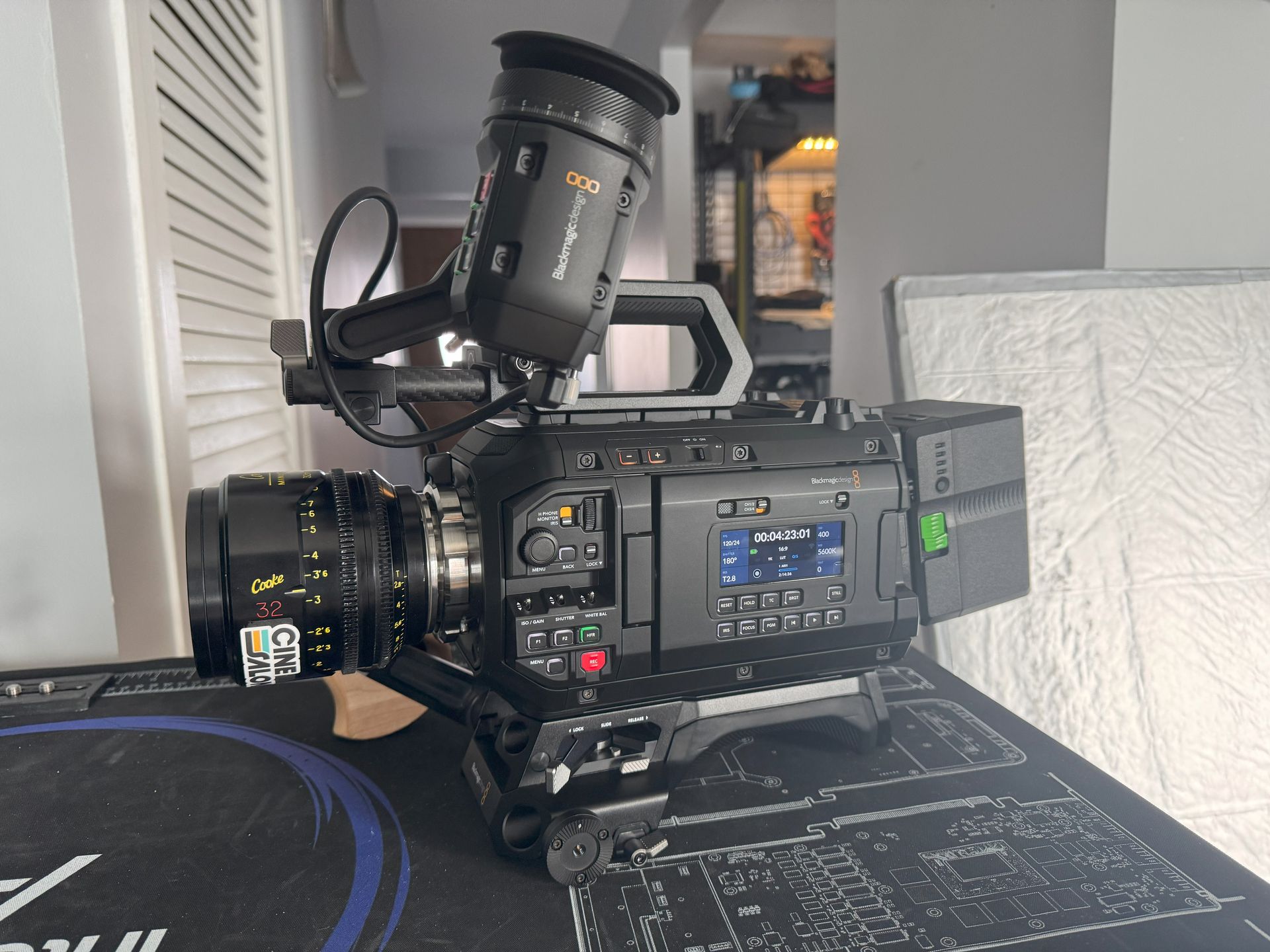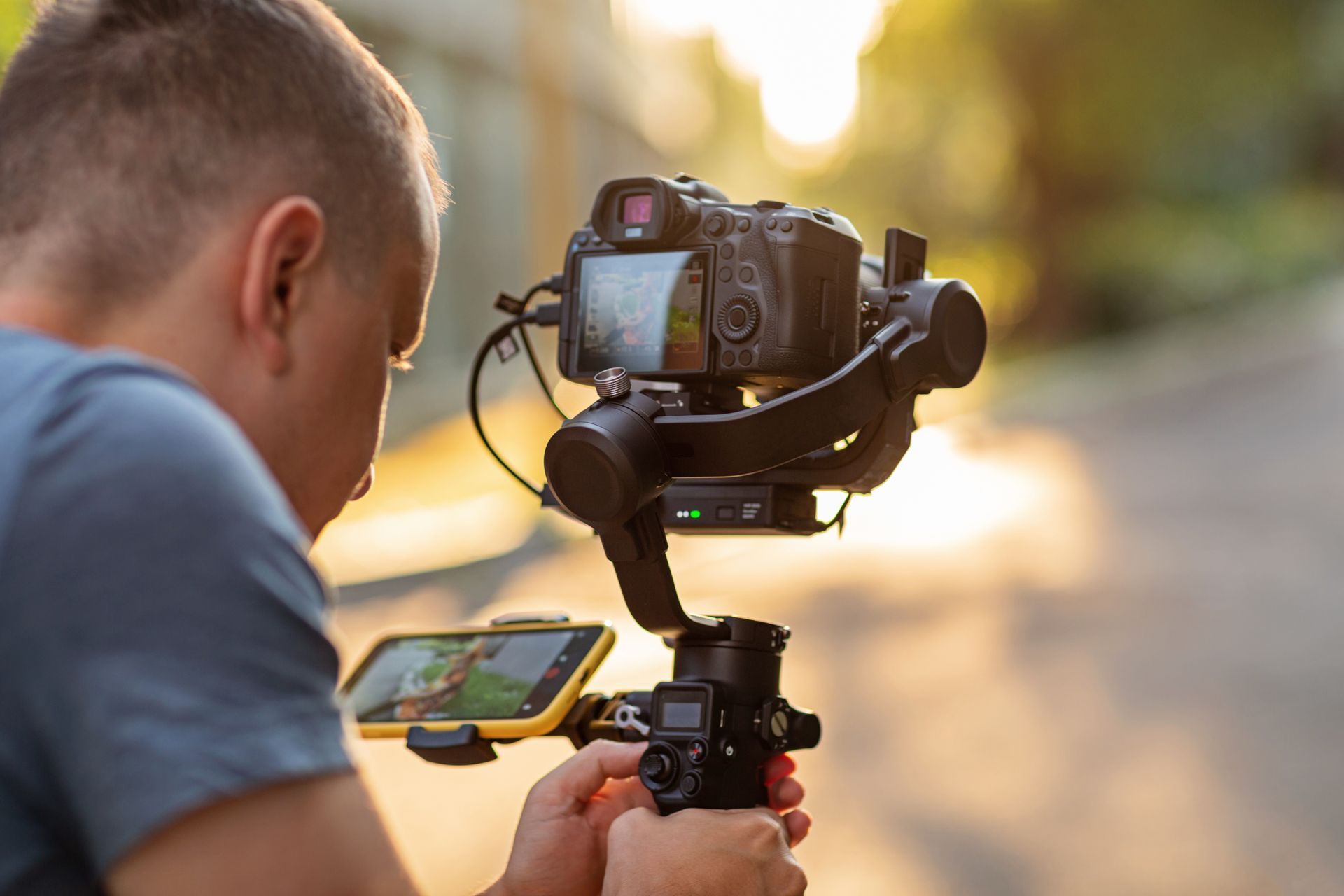Exploring different media for maximum reach and impact
Are you struggling to get your amazing video content in front of a wider audience? Are you finding it challenging to effectively distribute your videos across various platforms and reach your target viewers?
Don't worry; we've got you covered!
Mastering your advertising and distribution strategy is pivotal in achieving your video success objectives and positioning your brand in front of the right audience at the right time.
The key lies in striking the perfect balance between paid, earned, and owned media.
That's why we're here to guide you on how to approach your distribution strategy and share our top tips and best practices.
By starting on the right foot, you can maximize your brand's visibility and make significant strides toward your video marketing goals.
What is a video advertising distribution channel?
A video advertising distribution channel is a platform or medium where you can share your video ads with a specific audience. It's like a way to get your video ads in front of people who are most likely to be interested in what you have to offer.
For example, you can use social media platforms like YouTube, Facebook, Instagram, or Twitter to promote your video ads to users who match your target audience based on their interests, demographics, and online behaviors.
Using video advertising distribution channels gives you the power to precisely target your ads, measure their performance, and optimize your campaigns to get the best results. It's a smart way to get your brand or product in front of the right people with engaging video ads that can make a real impact.
Paid Media
When it comes to video distribution, paid ads offer a plethora of opportunities beyond traditional TV commercials or costly content creation.
From sponsored posts on Facebook to search ads on Google Display Network, the options for promoting your video content online are virtually limitless.
Although it's theoretically possible for a video to succeed without investing in paid ads, the likelihood is low. Even well-established companies often need to allocate a budget to their video ads to ensure they reach their target audience.
Whether you have a compelling product video showcasing your latest innovation or an interactive video ad with 3D elements, setting aside a few dollars for daily ad spend is essential to measure your video's effectiveness and achieve your brand objectives.
What are the different types of paid video distribution media?
1. Youtube Ads
2. Google Search Ads
3. Facebook Ads
4. Tiktok Ads
5. Native advertising
Let's explore some of these platforms where you can run paid video ads and how to get started.
Youtube Ads
YouTube Ads is a dynamic paid video distribution channel that enables you to showcase your video ads on YouTube, the largest video-sharing platform worldwide.
You can choose from various ad formats, including in-stream, discovery, and bumper ads, to effectively reach your target audience.
For example, if you have a fitness brand, you can create an in-stream ad that plays before a popular workout video on YouTube. This ad can showcase your latest fitness equipment and encourage viewers to visit your website to purchase.
Alternatively, you can create a discovery ad that appears alongside videos related to fitness and exercise. Users can discover your content while they search for workout videos.
Similarly, if you're a food brand, you can create a bumper ad that showcases a quick and delicious recipe using your product. This short and engaging ad can play before cooking videos. It gives viewers a teaser of what they can create with your product and entices them to visit your website for the full recipe.
According to YouTube's statistics, users watch over 1 billion hours of video content daily on the platform. This high level of engagement with video content on YouTube presents a significant opportunity for advertisers to capture users' attention through ads.
Why choose YouTube Ads?
With YouTube Ads, you can target your ads based on demographics, interests, behavior, and more. For instance, if you sell pet supplies, you can target your ads to users who have shown an interest in:
● pet care
● pet ownership
● specific pet breeds.
It ensures your ads are shown to a relevant and interested audience.
YouTube Ads also provide robust analytics and measurement tools that allow you to track the performance of your ads, such as view counts, engagement metrics, and conversion tracking. This data can help you optimize your ads, refine your targeting, and maximize the effectiveness of your video distribution strategy.
Google Search Ads
Also known as Google AdWords, Google Ads is a versatile paid advertising channel that allows you to distribute your video ads to potential customers when they search on Google or watch videos on YouTube. You can create different video ads, such as in-stream or discovery ads, to reach your audience.
For example, if you're a company that sells fitness equipment, you can create a video ad that showcases your latest treadmill model.
When users search for "best treadmills" on Google or watch fitness-related videos on YouTube, your ad can appear before or during their playback. Or as a suggested video alongside the search results or video recommendations.
Similarly, you can create a video ad highlighting vacation packages to exotic destinations if you run a travel agency. When users search for "dream vacations" on Google or watch travel vlogs on YouTube, your video ad can be shown as a discovery ad. It can appear alongside relevant travel videos or in YouTube search results.
Did you know that the first Google Ads campaign was run by co-founder Sergey Brin himself? In 2000, Brin created a simple text ad for Google that appeared above the search results for the query "querry," which was a misspelling of "query." The ad read, "Computer Hardware Query/Compaq Alpha/P3"
Why choose Google Search Ads?
With Google Search Ads, you can target your video ads based on keywords, demographics, interests, and more, to ensure your ads are shown to the right audience. You can set a budget and bidding strategy that aligns with your marketing goals. Moreover, you can track the performance of your video ads through Google Ads' analytics and reporting features.
By leveraging Google Search Ads as a paid video distribution channel, you can:
● increase the visibility of your video content.
● reach potential customers who are actively searching for related topics.
● drive targeted traffic to your website or landing page.
Facebook Ads
You can choose from different types of Facebook Ads for video distribution, such as in-feed video ads. These appear in users' news feeds as they scroll through Facebook. They can capture their attention with auto-play videos that include sound and captions.
Stories video ads offer an immersive and engaging viewing experience as they appear in the full-screen format of the Facebook Stories section.
Facebook Ads can also be placed on the Audience Network, a network of third-party apps and websites that display Facebook ads.
Fast fact: In 2020, Facebook generated over 97% of its total revenue from advertising.
Why choose Facebook ads?
One of the key strengths of Facebook Ads is the extensive targeting options available. You can aim your video ads based on demographics, interests, behavior, location, and more. It allows you to pinpoint your intended audience with precision.
For instance, if you have a fashion brand, you can target your ads to users who have expressed an interest in fashion, follow fashion influencers, or engage with fashion-related content.
Facebook Ads also provides comprehensive measurement and analytics tools that enable you to track the performance of your video ads. You can monitor metrics such as video views, engagement, and conversions. As such, you can assess the effectiveness of your video content and make informed decisions to optimize your video distribution strategy.
Tiktok Ads
TikTok Ads presents a popular and effective way to distribute your video content on TikTok, a short-form tool renowned for its captivating and viral content
With its widespread popularity, especially among younger audiences,
TikTok Ads offers a compelling platform for video advertising.
Various ad formats are available on TikTok Ads for video distribution which includes:
1. In-Feed Ads
These are eye-catching videos that appear in the main feed of TikTok users as they scroll through the platform. They can be as long as 60 seconds and are displayed in a full-screen format, grabbing users' attention as they engage with TikTok content.
2. Brand Takeover Ads
These full-screen videos appear as the first thing users see when they open the TikTok app, ensuring maximum visibility and impact.
Additionally, TikTok offers Branded Hashtag Challenges. These allow you to create a branded challenge and encourage users to participate and create their videos using your hashtag.
What sets TikTok Ads apart is the platform's highly engaged and interactive user base
TikTok users are known for actively participating in challenges, creating and sharing their videos, and engaging with content through comments, likes, and shares. This high level of user engagement can result in viral and organic reach for your video content, amplifying the impact of your paid ads.
Native advertising
Native advertising offers a seamless and engaging way to share video content with users.
Unlike traditional ads, native video ads blend harmoniously with the platform's content, matching its visual style and format. This results in a non-disruptive and integrated advertising experience for viewers, making it more enjoyable and engaging.
One of the major advantages of native video advertising is that it tends to generate higher engagement and better user experience.
By seamlessly integrating with the platform's content, native video ads are more likely to be viewed and interacted with by users.
Moreover, the credibility and trust associated with the platform's content can extend to native video ads, increasing brand affinity and user engagement.
Native video ads can be found on various platforms like:
● social media
● news websites
● content-based websites
● in-feed videos
● sponsored stories
● branded content
In-feed videos blend seamlessly into a platform's content feed. Sponsored stories are presented as part of news or article content. On the other hand, branded content is specifically created to match the tone and style of the platform's content.
However, it's important to ensure that native video advertising is transparent and clearly labeled as sponsored content. It should adhere to ethical advertising practices and maintaining user trust.
Pros of paid media
● Increased visibility extending beyond organic reach
● Offers advanced targeting options such as demographics, interests, behavior, and more
● Generates quicker results
● Typically provides robust analytics and tracking tools
Cons of paid media
● Costs can add up
● Can be seen as repetitive, leading to ad fatigue and decreased engagement
● Ad blocking of some users
● Competition
With strategic targeting and compelling ad creatives, paid media can significantly boost your video's visibility and reach, helping you achieve your video marketing goals more effectively.
Earned media
Earned media is a type of media coverage that a brand or content receives through organic means without the brand paying for it. In short, it’s free. It is typically the result of the media, influencers, or consumers finding the content valuable, interesting, or newsworthy and voluntarily sharing it.
Earned media can be a powerful video distribution channel as it can increase your video content's reach, credibility, and visibility without the need for paid advertising.
It requires creating valuable, interesting, and shareable video content. This would include media outreach, influencer collaborations, and relationship-building to maximize its potential.
What are the different types of earned video distribution media?
1. Customer reviews
2. Social media shares
3. Viral sharing
4. Online communities and forums
5. Media coverage
6. Word of mouth
7. SEO
Customer reviews
Customer reviews leverage user-generated content in the form of video reviews.
According to studies, 88% of consumers trust online reviews as much as personal recommendations. Moreover, videos with positive customer reviews can increase conversion rates by up to 80%
Here's how customer reviews typically work:
● Encouraging video reviews: This can be done through various means, such as email requests, social media campaigns, or on-site prompts. You can provide incentives, such as discounts or rewards, to motivate customers to submit video reviews.
● Collecting video reviews: This may involve setting up a system for customers to submit their video reviews. It should moderate the submissions to ensure quality and compliance with your guidelines. You also need to obtain necessary permissions and releases from customers to use their videos.
● Publishing video reviews: This may include publishing them on your brand's website, social media accounts, YouTube channel, or other relevant platforms. You can also embed video reviews in your product pages, email newsletters, or other marketing materials to showcase social proof and drive engagement.
● Leveraging video reviews: You can leverage video reviews to build trust, showcase product features and benefits, address potential objections, and highlight customer satisfaction. You can also use video reviews in your social media campaigns, email marketing, and other marketing initiatives to amplify your brand's message.
● Leveraging video reviews: You can leverage video reviews to build trust, showcase product features and benefits, address potential objections, and highlight customer satisfaction. You can also use video reviews in your social media campaigns, email marketing, and other marketing initiatives to amplify your brand's message.
● Engaging with video reviews: Acknowledge their efforts, express gratitude, and respond to their feedback. This can help you foster a positive relationship with customers, encourage more video reviews in the future, and demonstrate your commitment to customer satisfaction.
● Monitoring and managing video reviews: Ensure video reviews align with your brand values, comply with relevant regulations, and maintain quality standards. You may need to moderate and filter video reviews, and address any negative or inappropriate content. Furthermore, you should be able to respond to customer inquiries or concerns related to the video reviews.
By leveraging customer reviews as a video distribution channel, you can tap into the power of user-generated content to showcase authentic testimonials, drive engagement, and build trust with your target audience.
Video reviews provide a compelling and persuasive form of social proof that can significantly influence the purchase decisions of potential customers.
Social media shares and mentions
Social media shares and mentions can be a valuable and organic way to distribute your video content. They amplify its reach, engagement, and potential for virality.
When viewers find your video content engaging, informative, or entertaining, they may naturally share it on their social media profiles. They may also mention it in their posts, or tag their friends, generating organic reach and visibility among their network.
Here are some key points to understand about social media shares and mentions as a video distribution channel:
● Amplification:
Each share or mention can potentially lead to the content being seen by a new audience, which can result in increased views, engagement, and potential conversions.
● User-generated content:
This is where users voluntarily share your video content with their followers or mention your brand in their posts. UGC can be highly effective as it is seen as more authentic and relatable compared to branded content.
● Social media influencers:
Influencers have followers who trust their recommendations, and sharing your video content can result in increased visibility and engagement.
● Brand advocacy
Social media shares and mentions can help foster brand advocacy, as satisfied customers or fans voluntarily share your video content with their networks. This can help create a positive brand image, build trust, and encourage others to engage with your video content.
● Engagement and interaction
Users who see your video content shared by others may be more likely to like, comment, share, or engage with the content themselves.
● Virality potential
Social media shares and mentions can have the potential to go viral, especially when influential users share your video content. Viral videos can gain widespread visibility, engagement, and brand awareness, resulting in potential business impact.
Viral sharing
If your video content goes viral, it can spread rapidly through social media, email, or messaging platforms. This often results in organic distribution as people share it with their contacts, enhancing visibility and engagement.
Online communities and forums
Sharing your video content in relevant online communities, forums, or discussion boards where your target audience is active can result in earned distribution. If your content is valuable and resonates with the community members, they may share it with others or discuss it, leading to increased exposure.
Media coverage
When your video content gets featured in news articles, blogs, or online publications, it can generate earned visibility and reach among their audience. It can also lead to shares or mentions by other media outlets.
Word-of-mouth
When viewers enjoy your video content and share it with their friends, family, or colleagues through word-of-mouth, it can result in organic distribution and increased reach. This is due to people’s tendency to trust recommendations from their personal network.
SEO and search engine rankings
Optimizing your video content for search engines, such as Google or YouTube, can result in higher rankings in search results. It leads to organic visibility and distribution as viewers search for relevant topics or keywords.
Pros of Earned Media:
● Can lend credibility to your brand or content as it comes from unbiased sources
● Cost-effective since it relies on organic shares and mentions without direct costs ● Greater reach
Cons of Earned Media:
● Unpredictable and challenging to control, as it relies on external factors beyond your direct influence.
● Limited control over the content, timing, and context of the shares or mentions Often requires effort and follow-up to generate organic shares or mentions
● Time-consuming
● Limited Scale
Earned media is often considered the most credible because it's based on genuine user interactions and endorsements.
Users are likely to share or mention a brand's video content on social media, leave positive reviews, or generate organic buzz through word-of-mouth.
Earned media is valuable because it's typically generated by satisfied customers or brand advocates who voluntarily promote the brand without any direct compensation. It's a powerful and authentic way to amplify a brand's video content and expand its reach.
Owned Media
Owned media are platforms or channels that are exclusively controlled and managed by a brand or business to share their video content. These channels give brands full autonomy over their video content. They get to create a unique and branded video experience for their intended audience.
What are the different types of owned video distribution media?
1. Website
2. Email
3. Social media accounts
These channels empower brands to create, optimize, and distribute their videos in a way that aligns with their marketing goals and brand identity.
Website (blogs, ecommerce pages)
Your brand's website is a crucial owned media channel you completely control. You can create dedicated pages, landing pages, or sections on your website to host and distribute your video content.
Key points:
● Your website can be a platform for hosting and showcasing your video content. You can create dedicated pages or sections on your website to embed videos or provide links to video. This allows you to have full control over the presentation and positioning of your videos on your website.
● Your website is an extension of your brand's identity, and by hosting videos on your website, you can ensure that your branding and messaging are consistent. You can customize the look and feel of the video player. You can add branding elements such as logos or watermarks. Also, you can include accompanying text or descriptions that align with your brand's messaging.
● Your website allows you to create a seamless user experience for your viewers. You can design its layout and navigation to guide users to your video content. It makes it easy for them to discover and consume your videos. Adding interactive elements, such as call-to-action buttons, forms, or comment sections help to engage with your audience and encourage participation.
Email
You won't believe the impact videos can have on your email campaigns! It's a must-try if you want to get the most out of your video marketing efforts.
Including videos in your emails can shoot up your click-through rates by up to 50 percent! Adding the magic word "Video" in your subject line can boost your open rates by over 19 percent.
Ways you can use email to distribute your video:
● Email Campaigns: This can be done through embedded videos directly in the email or by including links to video content hosted on your website or other platforms.
● Personalization: You can segment your email list and send targeted video content to different segments based on their interests, demographics, or past interactions with your brand. Personalization can enhance the relevance and effectiveness of your video content, leading to higher engagement and conversion rates.
● Branding and Messaging: Use videos to showcase your brand's story, values, products, or services in a visually appealing and memorable way. By aligning your video content with your brand's messaging and tone, you can create a cohesive and impactful brand experience for your subscribers.
● Call-to-Action (CTA): You can use videos in your emails to drive specific actions from your subscribers. For example, you can include a CTA at the end of a video to encourage subscribers to click through to your website, purchase, sign up for a webinar, or take any other desired action.
● Email Automation: For example, you can send welcome emails with an introductory video to new subscribers. You can also nurture leads with educational or promotional videos, or send post-purchase videos to engage with customers and encourage repeat purchases. Email automation allows you to deliver relevant video content to your subscribers at the right time based on their behaviors and actions.
Social media accounts
Social media platforms such as Facebook, Instagram, Twitter, LinkedIn, YouTube, and others can serve as owned media channels for video distribution. Each platform has unique features and audience demographics, allowing you to tailor your video content to different platforms.
Key points:
● You can create video content specifically for social media platforms, keeping in mind the platform's video requirements and best practices. This may include:
○ creating short, snackable videos optimized for mobile viewing
○ incorporating captions or subtitles
○ adding branding elements
○ using engaging visuals and sound
● You can share your video content on your brand's social media accounts, either as organic posts or through paid promotions. Organic posts can help you reach your existing followers, while paid promotions can expand your reach and target a broader audience. Social media platforms also provide sharing features that allow users to share your video content on their profiles. It extends the reach of your videos to their followers and networks.
● Social media platforms are interactive by nature, allowing you to engage with your audience through comments, likes, shares, and messages. You can actively engage with your audience and respond to their comments or messages related to your video content. This can help you:
○ build a community around your video content
○ foster brand loyalty
○ encourage more shares and mentions.
● Many social media platforms also allow live video streaming, which can be a powerful way to engage with your audience in real-time. You can use live video streaming for product launches, behind-the-scenes looks, Q&A sessions, interviews, events, and other interactive experiences. Live videos can create a sense of urgency and exclusivity and generate higher engagement and shares.
Pros of owned media:
● Complete control over how and where your videos are distributed
● Allows customization of videos' placement, design, and branding
● Reach your existing audience, which is already interested in your brand or content
● Can leverage existing resources
Cons of owned media:
● Limited reach
● Dependency on Website Traffic
● Competition with other content on your website or blog, potentially diluting their impact.
● Limited analytics capabilities
It's important to carefully consider the pros and cons of owned video distribution channels and incorporate them strategically into your overall video marketing strategy to make the most of them.
Summary
In conclusion, video distribution channels offer many options to share and promote your video content effectively.
From paid media channels like YouTube ads and social media advertising to earned media channels such as social media shares and mentions. You also have owned media channels like websites and email marketing with each channel having its unique advantages and considerations.
Understanding your target audience, marketing goals, and budget is crucial to choose the right mix of distribution channels that align with your video marketing strategy.
By leveraging the strengths of various video distribution channels, you can maximize your video content's reach, engagement, and impact. Ultimately, they drive desired outcomes for your brand or business.
So, don’t be afraid to explore the different video distribution channels. Experiment with different approaches, and optimize your strategy based on the results. Doing these can unlock the full potential of your video marketing efforts.

Get total clarity on your video marketing and paid media with our FREE comprehensive data audit.







